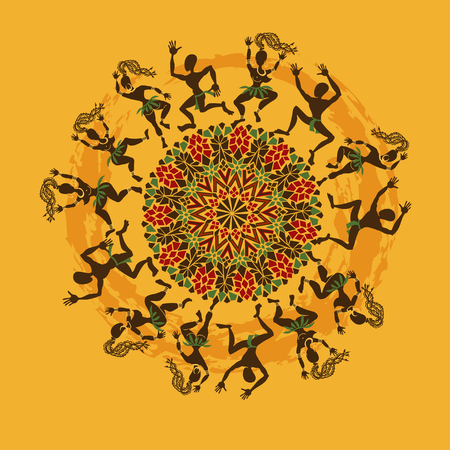Understanding Negative Energy: Indian Cultural Perspective
In Indian traditions, the concept of negative energy is deeply rooted and widely acknowledged. Known locally as drishti or nazar, these terms refer to the harmful effects of envious looks, ill intentions, or unseen forces that can disrupt one’s well-being, prosperity, or harmony. Families across India often share stories about how someone’s success, happiness, or health may attract unwanted attention or negativity from others, sometimes unconsciously. This belief is not merely superstition but is woven into daily life and cultural practices, influencing rituals, festivals, and even home design. The idea is that every individual emits energy—both positive and negative—and protecting oneself from negative influences is essential for maintaining balance and happiness in life. Whether through ancient rituals or simple household habits, Indians have developed a variety of methods to shield themselves from these unseen energies, reflecting a holistic approach to health and spiritual well-being.
2. The Power of Swastika and Rangoli in Protection
In traditional Indian households, the entrance of a home is considered the threshold where energies—both positive and negative—are most likely to enter. To safeguard their homes from negativity, Indians have long relied on powerful symbols such as the Swastika and Rangoli. These ancient motifs are not merely decorative but serve as potent spiritual tools believed to repel evil forces and attract auspiciousness.
The Swastika: A Sacred Symbol Across Cultures
The Swastika is one of the oldest and most revered symbols in Indian culture, representing prosperity, good luck, and protection. It is commonly drawn at the main entrance, on walls, or even above door frames during festivals like Diwali and Gudi Padwa. Hindus, Jains, and Buddhists all use variations of the Swastika in rituals and daily practices, emphasizing its universal acceptance as a protective charm.
| Occasion | Placement of Swastika | Cultural Significance |
|---|---|---|
| Housewarming (Griha Pravesh) | Main Door, Puja Room | Invites prosperity and wards off negativity |
| Festivals (Diwali, Navratri) | Doorsteps, Walls | Ensures spiritual cleansing of the home |
| Daily Rituals | Entrance, Courtyards | Maintains ongoing protection from evil eyes |
Rangoli: Artistic Defense Against Negativity
Rangoli designs, crafted with coloured powders or rice flour, are another cherished tradition at Indian doorways. Beyond their visual appeal, these intricate patterns are believed to act as energetic barriers. Every morning or during special occasions, women create vibrant Rangolis at the doorstep to invite Goddess Lakshmi while keeping away negative energies and harmful spirits.
Common Rangoli Motifs & Their Meanings
| Motif | Cultural Meaning | Protective Aspect |
|---|---|---|
| Lakshmi’s Feet (Padukas) | Welcomes prosperity into the home | Keeps financial hardships at bay |
| Lotus Flower | Symbolizes purity and spiritual growth | Cleanses negative vibrations from surroundings |
| Geometric Patterns (Circles/Swirls) | Represents eternity and completeness | Dissolves any incoming negative energy flow |
Cultural Context & Modern Relevance
The continued practice of drawing Swastikas and creating Rangolis at entrances reflects India’s deep-rooted belief in safeguarding homes through symbolic means. While some urban families opt for ready-made stickers or stencils due to time constraints, the essence remains unchanged—these symbols still play a vital role in maintaining positivity within Indian households.
![]()
3. Smudging with Dhoop and Agarbatti
One of the most time-honoured Indian practices to dispel negative energy is smudging, which involves burning dhoop (herbal resin) or agarbatti (incense sticks). This ritual, deeply embedded in Indian culture, is performed not only during religious ceremonies but also as part of daily routines to maintain a positive atmosphere at home or work. The aromatic smoke from dhoop and agarbatti is believed to purify the environment by neutralising negative energies and inviting auspiciousness. Traditionally, families light incense every morning and evening, often accompanied by prayers or mantras, to invoke blessings and cleanse their living spaces. Each fragrance—be it sandalwood, jasmine, or camphor—holds its own significance in Vedic texts and Ayurveda for balancing energies and uplifting mood. Many households also use dhoop during festivals like Diwali or Navratri to enhance spiritual vibrations and protect against evil influences. Incorporating this simple yet powerful habit into your routine can help create a peaceful ambience, foster mental clarity, and serve as a shield against negative forces according to Indian tradition.
4. Salt and Lemon: The Classic Household Remedies
In the realm of traditional Indian practices, salt and lemon have long been revered as powerful agents for warding off negative energy. These household staples are not merely culinary essentials, but play a significant role in spiritual cleansing across various Indian communities. Their use is deeply rooted in ancient beliefs, blending practicality with symbolic meaning.
The Symbolism and Science Behind Salt and Lemon
Salt is believed to possess purifying qualities that absorb negativity from the environment. It is often used in rituals to cleanse spaces and individuals from unwanted energies. Lemon, on the other hand, is considered an energy conductor, known for its ability to divert or neutralise negative vibrations due to its sharp, acidic nature. Together, these two ingredients form a potent combination widely used in homes and rituals.
Common Rituals Involving Salt and Lemon
| Remedy | Description | When to Use |
|---|---|---|
| Salt Water Mopping | Add a handful of salt to mop water for cleaning floors. | Weekly or after gatherings |
| Lemon & Green Chilli Hangings (Nimbu-Mirchi Totka) | A string of lemons and green chillies hung at doorways. | To ward off evil eye or before starting new ventures |
| Salt Bowls in Corners | Small bowls of rock salt placed in room corners. | During periods of stress or illness |
Cultural Context and Everyday Application
The application of salt and lemon extends beyond ritualistic purposes—it is common to see them used during festivals, family functions, or whenever there is a need for energetic renewal. Households may replace lemons and chillies every week, while salt bowls are refreshed regularly to ensure continued protection. These simple remedies resonate with both rural and urban India, bridging generations through shared cultural wisdom.
5. The Role of Mantras and Sacred Chants
In the Indian tradition, mantras and sacred chants hold a special significance when it comes to protecting oneself from negative energy. Chanting specific mantras is not only a spiritual practice but also a widely believed method to create a positive aura and safeguard the mind and environment from negativity. Among the most revered are the Gayatri Mantra and Hanuman Chalisa, both deeply rooted in Indian culture and daily rituals.
The Power of Vibrations
Mantras are considered powerful because they produce vibrations that resonate with certain frequencies, aligning the mind and soul towards positivity. According to traditional belief, these vibrations help dispel negative energies present in one’s surroundings. Many Indian families begin their day or important activities by chanting mantras, emphasizing their role in fostering mental clarity and emotional stability.
Gayatri Mantra: Invoking Divine Protection
The Gayatri Mantra is one of the oldest and most respected Vedic hymns. Recited at dawn or during stressful times, it is believed to invoke divine blessings for wisdom and protection. In many households across India, chanting the Gayatri Mantra is a daily ritual aimed at purifying the environment and shielding individuals from harmful influences.
Hanuman Chalisa: Strength Against Evil Forces
The Hanuman Chalisa is another sacred chant recited especially in North India. Dedicated to Lord Hanuman, who symbolizes strength and fearlessness, this 40-verse hymn is believed to ward off evil spirits, black magic, and negative thoughts. It is common for people to chant or play recordings of the Hanuman Chalisa before starting new ventures or during periods of uncertainty as a protective measure.
Cultural Relevance in Daily Life
For many Indians, the practice of chanting mantras or listening to sacred chants transcends religious boundaries; it becomes an integral part of daily life that nurtures both spiritual well-being and psychological resilience. Whether performed individually or as a family, these practices reflect deep-rooted cultural wisdom passed down through generations, offering a time-tested approach to keeping negative energy at bay.
6. The Black Thread and Eye Beads Tradition
In the rich tapestry of Indian culture, the use of black threads and eye beads—commonly referred to as nazar battu—is a deeply rooted tradition believed to protect individuals from negative energies and the so-called evil eye. This practice is especially prevalent among families with young children, who are considered more susceptible to the effects of jealousy or malicious glances. The concept revolves around the idea that intense admiration or envy can inadvertently bring harm. To counteract this, parents often tie a simple black thread around their child’s wrist, ankle, or neck. In some regions, you might see a small black dot applied on a child’s forehead or behind their ear as an additional protective measure.
The Symbolism of Black Thread
The colour black holds particular significance in Indian beliefs regarding protection from negativity. Unlike other colours that attract attention, black is thought to absorb harmful intentions and ward off unwanted energies. By tying a black thread, families symbolically shield themselves or their loved ones from external influences, maintaining positivity within their household.
Nazar Battu: Eye Beads for Protection
Alongside black threads, eye beads—featuring the design of an eye—are commonly used as amulets. These beads are either worn as jewellery or hung near entrances and cradles. The belief is that the watchful gaze of the bead deflects any ill will directed at the wearer, safeguarding them from harm. This tradition transcends religion and is practiced by various communities across India.
Cultural Relevance in Modern Times
While some may view these practices as superstitious, many Indian families continue to follow them as a blend of cultural heritage and psychological comfort. Wearing a black thread or nazar battu not only serves as a protective charm but also reinforces familial bonds and shared values. Even today, it is common to see both adults and children adorned with these simple yet meaningful symbols as a way to invite good fortune and repel negativity in everyday life.

